Ireland: Kilkenny Street Scenes
Jan 4, 2021 16:10:26 #
Kilkenny (Irish: Cill Chainnigh, meaning "church of Cainnech") is a city in County Kilkenny, Ireland. It is located in the South-East Region and in the province of Leinster. It is built on both banks of the River Nore. The 2016 census gave the total population of Kilkenny as 26,512.
Kilkenny is a tourist destination, and its environs include historic buildings such as Kilkenny Castle, St Canice's Cathedral and round tower, Rothe House, Shee Alms House, Black Abbey, St. Mary's Cathedral, Kilkenny Town Hall, St. Francis Abbey, Grace's Castle, and St. John's Priory. Kilkenny is also known for its craft and design workshops, the Watergate Theatre, public gardens and museums. Annual events include Kilkenny Arts Festival, the Cat Laughs comedy festival and music at the Kilkenny Roots Festival.
Kilkenny began with an early sixth-century ecclesiastical foundation within the Kingdom of Ossory. Following the Norman invasion of Ireland, Kilkenny Castle and a series of walls were built to protect the burghers of what became a Norman merchant town. William Marshall, Lord of Leinster, gave Kilkenny a charter as a town in 1207. By the late thirteenth century, Kilkenny was under Hiberno-Norman control. The Statutes of Kilkenny, passed at Kilkenny in 1367, aimed to curb the decline of the Hiberno-Norman Lordship of Ireland. In 1609, King James I of England granted Kilkenny a Royal Charter, giving it the status of a city. Following the Irish Rebellion of 1641, the Irish Catholic Confederation, also known as the "Confederation of Kilkenny", was based in Kilkenny and lasted until the Cromwellian conquest of Ireland in 1649. From 1840 onwards, Kilkenny has not been administered as a city under local government law, but the Local Government Reform Act 2014 provides for "the continued use of the description city".
Kilkenny was a brewing centre from the late seventeenth century, and still houses a number of breweries. The Heritage Council offices are at Church Lane in the former Bishop's Palace. The seat of the Roman Catholic Bishop of Ossory is at St Mary's Cathedral and the Church of Ireland Bishop of Cashel and Ossory is at St Canice's Cathedral.
Kilkenny's foundation began with an early sixth-century ecclesiastical settlement, with a church built in honour of St. Canice. Now St. Canice's Cathedral, this was a major monastic centre from at least the eighth century. The Annals of the Four Masters recorded the first reference Cill Chainnigh in 1085. Prehistoric activity has been recorded, suggesting intermittent settlement activity in the area in the Mesolithic and Bronze Age. Information on the history of Kilkenny can be found from newspapers, photographs, letters, drawings, manuscripts and archaeology. Kilkenny is documented in manuscripts from the 13th century onwards and one of the most important of these is Liber Primus Kilkenniensis.
The Kings of Ossory, O'Carrolls and Fitzpatricks, had residence around Cill Chainnigh. The seat of the diocese of Kingdom of Osraige was moved from Aghaboe to Cill Chainnigh. Following the Norman invasion of Ireland, Richard Strongbow, as Lord of Leinster, established a castle near modern-day Kilkenny Castle. William Marshall began the development of the town of Kilkenny and a series of walls to protect the burghers. By the late thirteenth century, Kilkenny was under Norman-Irish control. The original ecclesiastical centre at St. Canice's Cathedral became known as Irishtown and the Anglo-Norman borough inside the wall came to be known as Hightown.
The Hiberno-Norman presence in Kilkenny was deeply shaken by the Black Death, which arrived in 1348. The Statutes of Kilkenny passed at Kilkenny in 1367, aimed to curb the decline of the Hiberno-Norman Lordship of Ireland. In 1609 King James I of England granted Kilkenny a Royal Charter giving it the status of a city. Following the Rebellion of 1641, the Irish Catholic Confederation, also known as the "Confederation of Kilkenny", was based in Kilkenny and lasted until the Cromwellian conquest of Ireland in 1649. James II of England spent most of the winter months from November 1689 until January 1690 at Kilkenny, residing in the castle.
The Kilkenny Design Workshops were opened in 1965 and in 1967 the Marquess of Ormonde presented Kilkenny Castle to the people of Kilkenny. Today, it has a lively cultural scene, with annual events including the Kilkenny Arts Week Festival in the last two weeks of August, and the Cat Laughs Comedy Festival at the beginning of June. Kilkenny is also where the Irish ale, Smithwick's, was first brewed. There is now a brewery tour on the foundations of the original brewery. Kilkenny is referred to as the Marble City, and people from Kilkenny are often referred to as 'Cats'. The seat of the Roman Catholic Bishop of Ossory is at St. Mary's Cathedral and the Church of Ireland Bishop of Cashel and Ossory is at St. Canice's Cathedral.
Kilkenny is also the site of Ireland's earliest recorded witch trial. Occurring in 1324, the trial involved Dame Alice de Kyteler and her servant Petronella de Meath. Petronella would be the first person recorded in Ireland to be burned alive at the stake for witchcraft, after Dame Alice presumably fled the country. This trial was also one of the earliest recorded witch burnings in Europe and inspires much folklore about the possibility of the ghosts of Alice and Petronella haunting downtown Kilkenny. Alice's house, Kyteler's Inn, still stands and is now a pub.
https://en.wikipedia.org/wiki/Kilkenny
These images were all taken through the tour bus windows with a Nikon D7500 and an 18-300 Nikkor lens at 1/640 sec f5.6, auto ISO. Please enjoy, especially the downloads. I will post several more from our walking tour of Kilkenny. Finally, some blue skies!!!
Mark
Kilkenny is a tourist destination, and its environs include historic buildings such as Kilkenny Castle, St Canice's Cathedral and round tower, Rothe House, Shee Alms House, Black Abbey, St. Mary's Cathedral, Kilkenny Town Hall, St. Francis Abbey, Grace's Castle, and St. John's Priory. Kilkenny is also known for its craft and design workshops, the Watergate Theatre, public gardens and museums. Annual events include Kilkenny Arts Festival, the Cat Laughs comedy festival and music at the Kilkenny Roots Festival.
Kilkenny began with an early sixth-century ecclesiastical foundation within the Kingdom of Ossory. Following the Norman invasion of Ireland, Kilkenny Castle and a series of walls were built to protect the burghers of what became a Norman merchant town. William Marshall, Lord of Leinster, gave Kilkenny a charter as a town in 1207. By the late thirteenth century, Kilkenny was under Hiberno-Norman control. The Statutes of Kilkenny, passed at Kilkenny in 1367, aimed to curb the decline of the Hiberno-Norman Lordship of Ireland. In 1609, King James I of England granted Kilkenny a Royal Charter, giving it the status of a city. Following the Irish Rebellion of 1641, the Irish Catholic Confederation, also known as the "Confederation of Kilkenny", was based in Kilkenny and lasted until the Cromwellian conquest of Ireland in 1649. From 1840 onwards, Kilkenny has not been administered as a city under local government law, but the Local Government Reform Act 2014 provides for "the continued use of the description city".
Kilkenny was a brewing centre from the late seventeenth century, and still houses a number of breweries. The Heritage Council offices are at Church Lane in the former Bishop's Palace. The seat of the Roman Catholic Bishop of Ossory is at St Mary's Cathedral and the Church of Ireland Bishop of Cashel and Ossory is at St Canice's Cathedral.
Kilkenny's foundation began with an early sixth-century ecclesiastical settlement, with a church built in honour of St. Canice. Now St. Canice's Cathedral, this was a major monastic centre from at least the eighth century. The Annals of the Four Masters recorded the first reference Cill Chainnigh in 1085. Prehistoric activity has been recorded, suggesting intermittent settlement activity in the area in the Mesolithic and Bronze Age. Information on the history of Kilkenny can be found from newspapers, photographs, letters, drawings, manuscripts and archaeology. Kilkenny is documented in manuscripts from the 13th century onwards and one of the most important of these is Liber Primus Kilkenniensis.
The Kings of Ossory, O'Carrolls and Fitzpatricks, had residence around Cill Chainnigh. The seat of the diocese of Kingdom of Osraige was moved from Aghaboe to Cill Chainnigh. Following the Norman invasion of Ireland, Richard Strongbow, as Lord of Leinster, established a castle near modern-day Kilkenny Castle. William Marshall began the development of the town of Kilkenny and a series of walls to protect the burghers. By the late thirteenth century, Kilkenny was under Norman-Irish control. The original ecclesiastical centre at St. Canice's Cathedral became known as Irishtown and the Anglo-Norman borough inside the wall came to be known as Hightown.
The Hiberno-Norman presence in Kilkenny was deeply shaken by the Black Death, which arrived in 1348. The Statutes of Kilkenny passed at Kilkenny in 1367, aimed to curb the decline of the Hiberno-Norman Lordship of Ireland. In 1609 King James I of England granted Kilkenny a Royal Charter giving it the status of a city. Following the Rebellion of 1641, the Irish Catholic Confederation, also known as the "Confederation of Kilkenny", was based in Kilkenny and lasted until the Cromwellian conquest of Ireland in 1649. James II of England spent most of the winter months from November 1689 until January 1690 at Kilkenny, residing in the castle.
The Kilkenny Design Workshops were opened in 1965 and in 1967 the Marquess of Ormonde presented Kilkenny Castle to the people of Kilkenny. Today, it has a lively cultural scene, with annual events including the Kilkenny Arts Week Festival in the last two weeks of August, and the Cat Laughs Comedy Festival at the beginning of June. Kilkenny is also where the Irish ale, Smithwick's, was first brewed. There is now a brewery tour on the foundations of the original brewery. Kilkenny is referred to as the Marble City, and people from Kilkenny are often referred to as 'Cats'. The seat of the Roman Catholic Bishop of Ossory is at St. Mary's Cathedral and the Church of Ireland Bishop of Cashel and Ossory is at St. Canice's Cathedral.
Kilkenny is also the site of Ireland's earliest recorded witch trial. Occurring in 1324, the trial involved Dame Alice de Kyteler and her servant Petronella de Meath. Petronella would be the first person recorded in Ireland to be burned alive at the stake for witchcraft, after Dame Alice presumably fled the country. This trial was also one of the earliest recorded witch burnings in Europe and inspires much folklore about the possibility of the ghosts of Alice and Petronella haunting downtown Kilkenny. Alice's house, Kyteler's Inn, still stands and is now a pub.
https://en.wikipedia.org/wiki/Kilkenny
These images were all taken through the tour bus windows with a Nikon D7500 and an 18-300 Nikkor lens at 1/640 sec f5.6, auto ISO. Please enjoy, especially the downloads. I will post several more from our walking tour of Kilkenny. Finally, some blue skies!!!
Mark
Passing Kilkenny Castle
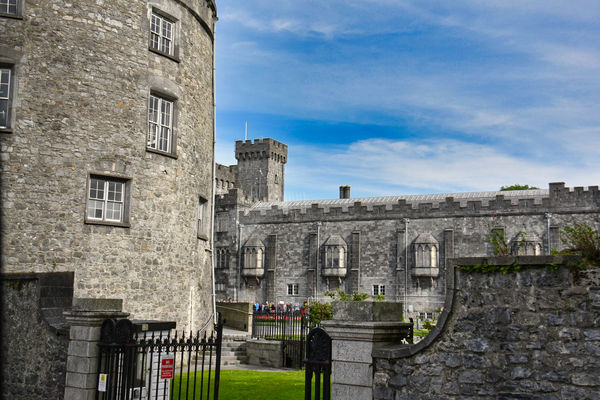
(Download)
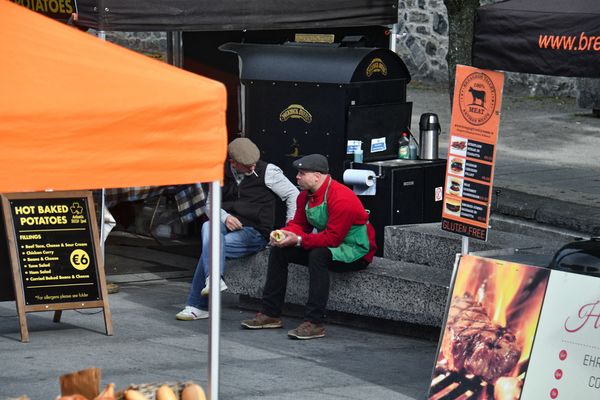
(Download)
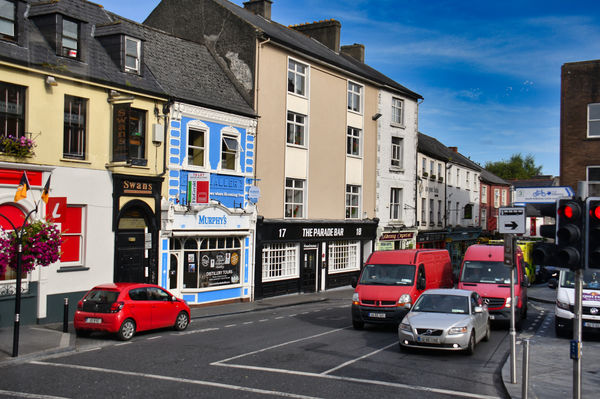
(Download)
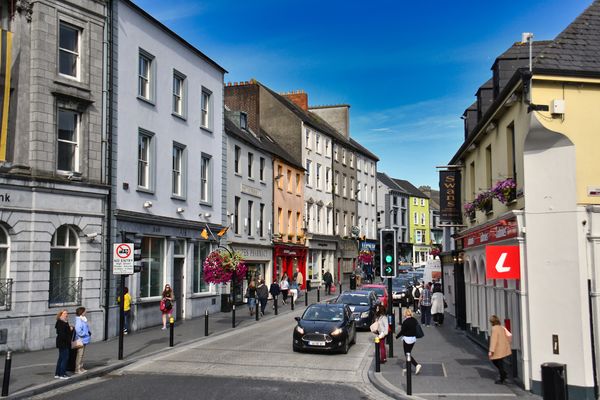
(Download)
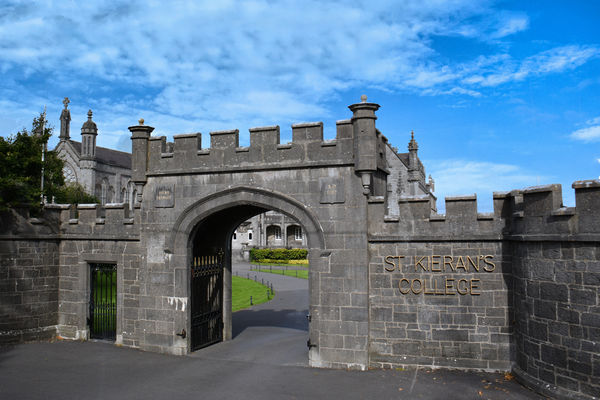
(Download)
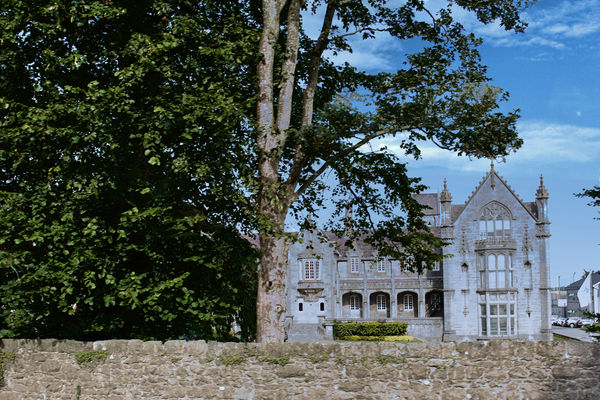
(Download)
St. Mary's Cathedral in Background
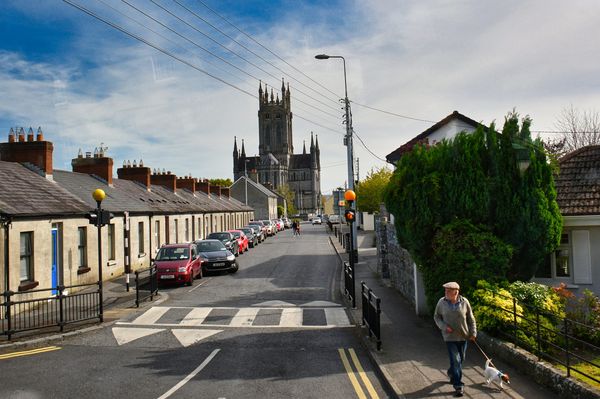
(Download)
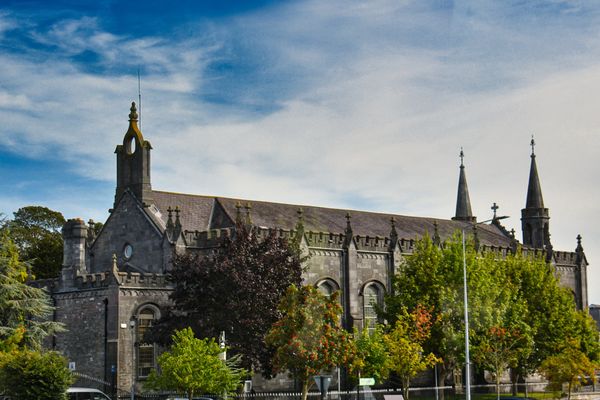
(Download)
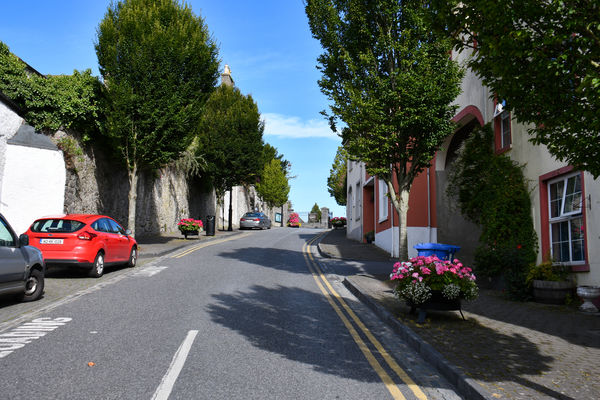
(Download)
Jan 4, 2021 16:11:53 #
Jan 4, 2021 16:13:30 #
Jan 4, 2021 16:49:26 #
Jan 4, 2021 16:49:53 #
UTMike wrote:
You captured the feel of the village well, Mark!
Thanks so much Mike.
Jan 4, 2021 16:50:15 #
Jan 4, 2021 16:51:20 #
kpmac wrote:
I have often heard of that village. Thanks for the tour, Mark.
Thanks Ken. Lots of songs about Kilkenny.
Jan 4, 2021 17:20:58 #
Wonderful! I love the shots of the village - such a picturesque place with a homey feeling 

Jan 4, 2021 17:31:44 #
joecichjr wrote:
Wonderful! I love the shots of the village - such a picturesque place with a homey feeling 

Thanks so much Joe.
Jan 4, 2021 18:05:01 #
srfmhg wrote:
Kilkenny (Irish: Cill Chainnigh, meaning "chu... (show quote)
I'm really enjoying the tour Mark. Photo number 2 is a great candid shot.
Jan 4, 2021 18:07:09 #
DJphoto wrote:
I'm really enjoying the tour Mark. Photo number 2 is a great candid shot.
Thanks very much Dennis. Sometimes the candids say alot about a place.
Jan 5, 2021 01:30:24 #
Jan 5, 2021 02:18:31 #
weberwest wrote:
Nice shots Mark - and you got blue skies!
Thanks so much Joe. Blue skies were a welcome sight!
Jan 5, 2021 05:11:09 #
Jan 5, 2021 06:49:33 #
If you want to reply, then register here. Registration is free and your account is created instantly, so you can post right away.









